Efficacy of integrated neuromuscular ischemic technique in the treatment of upper trapezius trigger points
2 Department of Physiotherapy, University of Balochistan, Quetta, Pakistan, Email: SeemabMughal2@hotmail.com
3 Department of Physiotherapy, Royal College of Physiotherapy, Rahim Yar Khan, Pakistan, Email: abc@gmail.com
4 Department of Physiotherapy, ACELP, Karachi, Pakistan, Email: abc@gmail.com
5 Department of Physiotherapy, Bhitai Institute of Physiotherapy and Rehabilitation Sciences, Mir Pur Khas, Pakistan, Email: abc@gmail.com
6 Health Sciences Department, Iqra University, Karachi, Pakistan, Email: Alishanoreen2@yahoo.com
Received: 15-Jul-2020 Accepted Date: Aug 06, 2020 ; Published: 14-Aug-2020
This open-access article is distributed under the terms of the Creative Commons Attribution Non-Commercial License (CC BY-NC) (http://creativecommons.org/licenses/by-nc/4.0/), which permits reuse, distribution and reproduction of the article, provided that the original work is properly cited and the reuse is restricted to noncommercial purposes. For commercial reuse, contact reprints@pulsus.com
Abstract
Background and purpose: Evaluate the efficacy of integrated neuromuscular ischemic technique in the treatment of upper trapezius trigger points.
Subject: 20 students were selected for the study.
Methods: The 20 selected subjects with trapezius trigger points were randomly selected. All participants who fulfilled inclusion criteria were selected from Isra Institute of Rehabilitation Sciences. Informed consent was taken from students. In both groups, trigger points were identified by the star palpation method, assessment performa was filled up by the therapist and neck range of motion assessed by inclinometer and neck pain was assessed by numeric pain scale as base line measurement on the first day (pre-test scores) before starting the treatment.
Results: INIT patients, results showed INIT patients mean NPR was 4.4 ± 1.1 and after treatment it was 1.4 ± 0.76 and differences were statistically significant with p-value less than 0.05.
Conclusion: The present study was done to find out the effectiveness of INIT in the treatment of upper trapezius trigger points. This study endorses that trigger points in trapezius can cause neck pain with restriction in cervical range of motion. INIT were found to be effective in reducing pain and improving cervical range of motion.
Keywords
Trigger point, Trapeizus, Integrated neuromuscular inhibition technique
Introduction
Segmentation educations showed the structure of the trapezius. Trapezius fibers like occipital and nuchal passed down but insertion into the clavicle transverse mainly. Fibers from C7 to T1 vertebrae distributed diagonally and insert into the acromion process and spine of the scapula and thoracic fibers inserted into the deltoid tubercle of the scapula. Fibers from C7 to T1 vertebrae and the lower half of ligamentum nuchae were the largest. Due to oblique alignment of the upper and middle fibers of trapezius prevent from happening any feat as elevators of the scapula as commonly illustrated. Drawing the scapula and clavicle backwards are action of these fibers rather or to rotate the clavicle and elevates the scapula around the sternoclavicular joint [1]. Myofascial pain syndrome correlated to activate sockets is a no inflammatory ailment of musculoskeletal origin, allied with native discomfort and muscle rigorousness, described by the existence of hyperirritable palpable nodules in the skeletal muscle fibers, which are termed activate points. Myofascial pain is apparent as an overcast, non-pulsating ache which can contrast from slight distress to debilitating discomfort, equally at repose and throughout movement it is infrequently symmetric and implements a segmented circulation [2]. Myofascial pain syndrome is incredibly usual with the local population. Chances of acquiring said ailment can be reaching up to 54% in the female locality and 45% in the male locality; even though the commonness of patients with Trigger Points (TrPs) in the masticatory muscles does not go over 25%.The most common age for myofascial pain syndrome to occur are 27.5 and 50 years, with predilection in inactive individuals. The mainstream publications do not show substantial modifications between two genders although a greater occurrence in females has been stated [2]. Myofascial trigger points which are notorious trigger points explained as hypersensitive points in the fascia and adjoining skeletal muscle. They remain connected with deep nodules in the stiff bands of muscle fibers [3]. Active and latent are the forms of trigger point. Latent Trps focuses the level of initiation is not adequate for them to cause discomfort. In difference an active trigger point in which the stimulation appears of such strength that compulsions attacking the brain the source of discomfort denoted in the locality of the fact or at a site-specific detachment left [4]. Pressure of a Trps can provoke local painfulness, inflammation, or native spasm response. Local spasm reaction is not similar as a muscle twitch, because muscle spasm states “full muscle contracting although the local spasm response similarly rises to the entire muscle but it includes a small tremor, no tightening [5]. The term Trps was given by Dr. Travell in 1942 with medical discovery which have the listed characteristics Ache, irascible point inside the muscle or surrounding tissue, which is not triggered by moderate indigenous inflammation, infection and trauma. Hyper irritable spot can be stroked as a band or lump in the skeletal muscle and a contraction can be produced when the trigger point is stimulated with electrical stimulation. When the Trps is palpated patient’s complaint of aching and mostly jump sign, and the ache releases to the spreading area of specific muscle. Trigger point pain cannot be examined through neurological classification [3].
Travel and Simons leans the following as indications of myofascial pain syndrome myofascial pain referred from trigger point has definite forms that are representative of each muscle [3]. Trigger point become stimulated directly due to acute burden, exhaustion, direct strain and by distressing of the muscle. Trigger points become stimulated incidentally by other trigger points, visceral disease, arthritic joints and emotive stress. Active trigger points may be converted from a latent to an active state by any preserving factor. Active trigger points differ in pain force at any specified time. Clinical structures of trigger points may extend outlast the originating event. Phenomena other than pain such as localized vasoconstriction, dripping, salivation and pilomotor action as well as proprioceptive instabilities including faintness, tinnitus and inequity may result from the movement of trigger points [4]. Trigger points are categorized into active attachment trigger points, ligamentous trigger points, latent trigger points [6].
Active trigger points produce pain at resting tender on palpation and have referred pain pattern [6-8]. Discomfort is not sensed at the trigger point but tart from these points forth. Agony may be radiating or spreading [9]. Referred pain is more typical than spreading pain. This property differentiates between tender point and trigger point [10].
Latent Trps cause weakness and restrict the movement and pain is not spontaneous [8]. In patient with weakness and movement restriction pain originate from dormant prompt point only when force is applied right on the point [11]. Trps in the retorting manner upright towards the muscle, native spasm response is usually produced [12]. Common spasm reaction is well-defined as a fleeting observable or deep reduction or lumpiness of muscle and covering equally the tense muscle fiber of the Trps shrink upon the application of compression.
Classic trigger points defined as the incidence of central tenderness positioned in a stiff group of skeletal muscle which yields in cooperation of the denoted regional discomfort and local spasm reaction [10]. Ligamentous trigger point produce within ligaments but the relationships are not always clear [13].
There are three portions of trapezius like upper middle and lower trapezius muscle and each portion have two trigger points plus one unusual due to autonomic phenomena. Trigger points of upper trapezius were found most frequently identified in body. Superior trapezius Trps referred ache in post lateral part of the neck, ear, and temple. Sudden trauma, down stairs, falling from height, poor posture, misfit furniture, muscular abuse and longtime immobility are factors due to which trigger points are formed in trapezius muscle. Asymmetry in pelvic size and in leg length difference affects the shoulder and applied over load on upper trapezius muscle. When the pelvic deviate on lateral side it causes spinal curve in result shoulder deviate on one side and body sags. Upper trapezius muscle work continuously when it keeps the head and neck vertical. When an individual walk with cane that is miss fitted like if the cane is too long that put forces up the shoulder on side and of cane in result shoulder deviate. Trapezius muscle always working against gravity because trapezius muscle supports the weight of shoulders and arms. Some behaviors that load the arms such as activities require the arms to be held up for long period of time like talking on phone for long periods a problem. Other possible causes are heavy weight hung with shoulders, heavy bags, and sleeping with the head turned sharply to one side also women with large breast suffering from trapezius problems especially when wears tight fitted bras. [14].
There are two trigger points in upper trapezius named TrP1 an TrP2. TrP1 is located at very top of the trapezius and pain referred unilateral aspect of neck4 and mastoid process and alongside of head to the temple. TrP1 is associated with tension headache [15]. Trigger points can be activated due to numerous factors which include prolonged muscle excess, by the initiation of further Trps like (primary/secondary), infection, emotional issues like (stress/anxiety), trauma, homeostatic imbalance, infections, and smoking [16]. Patient who suffer from trigger point frequently make a complaint of local persistent ache that commonly effect diminution range of motion. Diagnosis of trigger points depends on Taut band [3]. A stiff band is found flat or gripper palpation on a muscle that is somewhat stretched (this minor stretch must not induce or exacerbate pain. Local twitch response an impulsive local twitch is formed when portion of the muscle comprising the trigger point is moved beneath the fingers. Jump sign once appropriate force is applied to a trigger point the behavioral response may be drawing or a verbal reaction. This is representative of myofascial pain syndrome. Referred pain compression applied to an active trigger point produces native pain over the tender spot as well as referred pain in a pattern representative of the muscle [4].
In neuromuscular inhibition technique a trigger point is situated by palpation, nearly all frequently with the fingers. A trigger point is a confined area of deep hardening. The skilled practitioner will frequently observe a palpable change as a finger pass above the trigger point. Stress on a trigger point will frequently cause twitching in the muscle that within the trigger point. Finger strain is maintained on top of the trigger point, the trigger point will fabricate a pain which refers to an area exterior the muscle which within it. Area doesn’t have to be adjacent with the muscle contain the trigger point. There might very well be a number of diverse trigger points and their mention areas may well overlie.
After that step in the procedure is that finger or thumb strain is functional by the clinician to the trigger point. Classically this further pressure may be practical for five seconds and this can be repetitive a number of times until it feels to the clinician or the patient that the trigger point is starting to change [17]. Ischemic compression is the application of direct digital compression sustained above point with adequate strength and definite time interval, to sluggish the blood flow and dismiss tension in the muscle intricate [18,19]. An anticipated appliance for the use of ischemic compression, recommends that release of discomfort and muscle twinge of the direct digital compression may consequence from responsive hyperemia formed in the area, or as of the spinal reflex mechanism [19].
Several studies confirmed that ischemic compression can be applied as prophylactic or protecting methods in the trigger points. Ischemic compression is moderately innovative procedure, which has been confirmed the advantageous effect on dropping trigger point sensitivity in patients with trigger point [20].
Integrated neuromuscular ischemic technique permits the distribution of performance in a solitary co-ordinate method. INIT comprises by the site of comfort as a portion of a categorization which inaugurates with the position of a tender point, monitored by the application of ischemic compression and then strain counter strain. Subsequently an applicable stretch of period through which the muscles are held in comfort (20 sec-30 sec) then the client is showed to present an isometric contraction into the muscles casing the trigger point and held it for 7 sec-10 sec, later these muscles are overextended [21].
INIT procedure can be used for the treatment of trigger point pain in trapezius muscle as statistically important development was noticed. As trigger points are frequently seen in medical practice. This skill much helps gaining the perfection in patient’s pain intensity scores, range of motion and neck discomfort questionnaire [22].
In the year 2002 a study was done by Hou et al. concluded that the instantaneous results of different treatment modalities on cervical myofascial pain and trigger points ache. Integrated neuromuscular ischemic technique can serve as an alternate cure moreover low pressure as well as an extended length (90s) or high pressure as well as short length (30s) for instant cure for discomfort and trigger purpose sensitivity subdual [19]. In the year 2015 a study was done by Jyothirmai et al. [23] to determine the adequacy of INIT alone and INIT alongside quality preparing in upper trapezius trigger point individual. Study underpins that trigger points in trapezius may the source of neck discomfort through limitation in cervical Range of motion as well as expanded incapacity. As indicated by the neck disability index, independently both test and control aggregate were observed to be powerful in decreasing ache and enhancing cervical range of motion and lessening neck disability. Though which the two groups were analyzed, the huge change in test assemble with more prominent mean than the control group [23].
Methodology
It was pre and post experimental study conducted in Isra Institute of Rehabilitation Sciences Karachi Campus. Sampling technique was simple random sampling and the sampling size was 20 students were selected for the study. Both male and female 19 years to 25 years old were included with presence of a taut band in the upper trapezius muscle with an active painful trigger point at its middle, pain is produced upon palpation. Patients complain from neck pain restriction of neck ROM. Numeric pain scale and inclinometer data collection tule was used.
Procedure of Technique of Init
Patients with upper trapezius trigger points received 4 weeks treatment of INIT.
Protocol
The study was divided into 3 phases:
• Phase (A) Pre-treatment assessment: Baseline outcome measure was NRS scale, ROM
• Phase (B) Intervention phase: INIT was given for 3 days in a week for 4 weeks
• Phase (C) Post-treatment assessment outcome measures were recorded at the end of 4 weeks (Fig. 1-3) [24]
Results
Fig. 4 reports the mean and standard deviations of cervical movements among INIT treated patients at pre and post levels, results showed that, right rotation before treatment was 65.6º and after treatment it was 73.4º, significantly improved, left rotation before treatment was 65º and after treatment it was 73.15º, similarly right and left flexion rotation were significantly improved after the INIT treatment with p-values less than 0.01. Fig. 5 gives the mean comparison of NRS scores among INIT patients, results showed, among INIT patients mean NRS was 4.4 ± 1.1 and after treatment it was 1.4 ± 0.76 and differences were statistically significant with p-value less than 0.05.
Discussion
The aim of the study was to check the efficacy of integrated neuromuscular ischemic technique in the treatment of upper trapezius trigger points. Findings of the current study revealed that participants receiving INIT reported improvement in the symptoms with the reduction in the pain by the mean difference of 4.4 to 1.4. It has also been observed that reduction in the pain might be the result of mechanoreceptor activation by the pain gate mechanism during the release of trigger points through pressure release technique that facilitates the circulation and pain reduction. In the following study results showed that right side cervical bending was improved by 38.85 to 43.15 and left side cervical bending was improved by 39.6 to 43.4 and right-side cervical rotation by 63.6 to 73.4 and left cervical rotation was improved by 65 to 73.15.
Study conducted by Jyothirmai et al. [23] on patients with upper trapezius trigger points in order to identify the sufficiency of INIT separately and INIT close by quality getting ready in upper trapezius trigger point patients. The study findings showed that upper trapezius trigger point’s results in the neck torment with impediment in range of motion of cervical and extended insufficiency. Neck disability index also indicates that, independently both test and control aggregate were observed to be powerful in decreasing torment and enhancing range of motion of cervical and lessening the disability of neck. Whereas when the two groups were analyzed, there was a huge change in test assemble with more prominent mean as compared to the control group [24].
Conclusion
It has been concluded from the study that both the techniques INIT and PRT were found to be effective in the treatment of upper trapezius trigger points. Significant improvement was seen in the symptoms of patient with the increase in cervical range of motion and reduction in pain. The study further concluded that INIT was found to be more effective as compared to PRT in the patients with upper trapezius trigger points.
REFERENCES
- Johnson G., Bogduk N., Nowitzke A., et al.: Anatomy and actions of the trapezius muscle. Clin Biomech. 1994;9:44-50.
- Vázquez D.E., Cascos-Romero J., Gay E.C.: Myofascial pain syndrome associated with trigger points: literature review. (I): Epidemiology, clinical treatment and etiopathogeny. Med Oral Patol Oral Cir Bucal. 2009;14:494-498.
- Travell J.G., Simons D.G.: Myofascial pain and dysfunction. Baltimore: Williams and Wilkins. 1999.
- Pillay M.G.: The treatment of myofascial pain syndrome using therapeutic ultrasound, on upper trapezius trigger points: A double-blinded placebo-controlled study comparing the pulsed and continuous waveforms of ultrasound. 2003.
- McPartland J.M.: Travell trigger points-molecular and osteopathic perspectives. Osteopath Assoc. 2004;104:244-249.
- Han S.C., Harrison P.: Myofascial pain syndrome and trigger-point management. Reg Anesth. 1997;22:89-101.
- Hong C.Z., Hsueh T.C.: Difference in pain relief after trigger point injections in myofascial pain patients with and without fibromyalgia. Arch Phys Med Rehab. 1996;77:1161-1166.
- Ling F.W., Slocumb J.C.: Use of trigger point injections in chronic pelvic pain. Obstet Gynecol Clin North Am. 1993;20:809-815.
- Mense S., Schmidt R.F.: Muscle pain which receptors are responsible for the transmission of noxious stimuli? Physiol Aspect Clin Neurol. 1977;102:575.
- Hopwood M.B., Abram S.E.: Factors associated with failure of trigger point injections. Clin J Pain. 1994;10:227-234.
- Fricton J.R., Kroening R., Haley D.: Myofascial pain syndrome of the head and neck: a review of clinical characteristics of 164 patients. Oral Surg Oral Med Oral Pathol. 1985;60:615-623.
- Travell J.G., Simons D.G.: Myofascial pain and dysfunction: the trigger point manual. Lippincott Williams and Wilkins. 1983.
- Hackett G.S.: Ligament and tendon relaxation treated by prolotherapy. CC Thomas. 1958.
- Simons D.G.: Myofascial pain syndrome due to trigger points. Int Rehab Med Assoc. 1987.
- Fernandez-de-Las-Penas C., Simons D.G., Gerwin R., et al.: Muscle trigger points in tension type headache. Tension type and cervicogenic headache: patho-physiology, diagnosis and treatment. Baltimore: Jones and Bartlett Publishers. 2009;61-76.
- Shah J.P., Gilliams E.A.: Uncovering the biochemical milieu of myofascial trigger points using in vivo microdialysis: an application of muscle pain concepts to myofascial pain syndrome. J Bodyw Mov Ther. 2008;12:371-384.
- Chaitow L.: Muscle energy techniques. Churchill Livingstone. 2001.
- Gemmel H., Miller P., Nordstrom H.: Immediate effect of ischemic compression and trigger point pressure release on neck pain and upper trapezius trigger point. Clin Chiropract. 2008;11:30-36.
- Hou C.R., Tsai L.C., Cheng K.F., et al.: Immediate effects of various physical therapeutic modalities on cervical myofasical pain and trigger point sensitivity. Arch Phys Med Rehabil. 2002;83:1406-1414.
- Kaur D., Arora R., Arora L., et al.: Efficacy of low level laser therapy combined with ischemic compression in the treatment of latent myofascial trigger points. Innov Res Dev. 2014;3:407-411.
- Jyotsna M., Reddy V.A., Madhavi K.: Effectiveness of Integrated Neuromuscular Inhibitory Technique (INIT) on pain, range of motion and functional abilities in subjects with mechanical neck pain. Pharm Res Bio Sci. 2014;3:32-41.
- Sharma A., Angusamy A., Kalra S., et al.: Efficacy of post-isometric relaxation versus integrated neuromuscular ischemic technique in the treatment of upper trapezius trigger points. IJPOT. 2010;4:1-5.
- Jyothirmai B., Kumar S.K., Raghavkrishna S., et al.: Effectiveness of integrated neuromuscular inhibitory technique (init) with specific strength training exercises in subjects with upper trapezius trigger points. J Physiother. 2015:2:759-764.
- Wakde P., Anap D.: Effectiveness of Integrated neuromuscular inhibitory technique in sub-acute trapezitis: a single case study. VIMS Physiother J Case Reports. 2016;1:11-15.

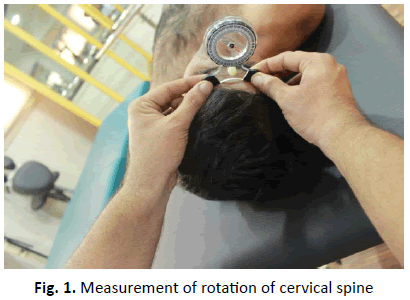
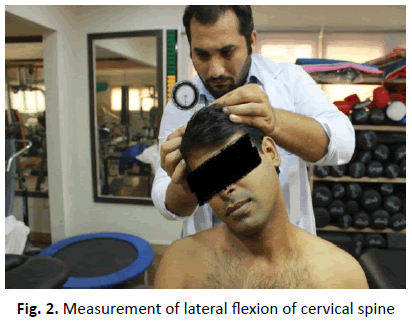
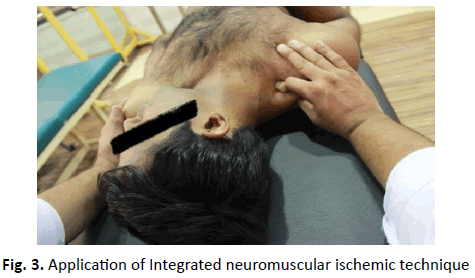
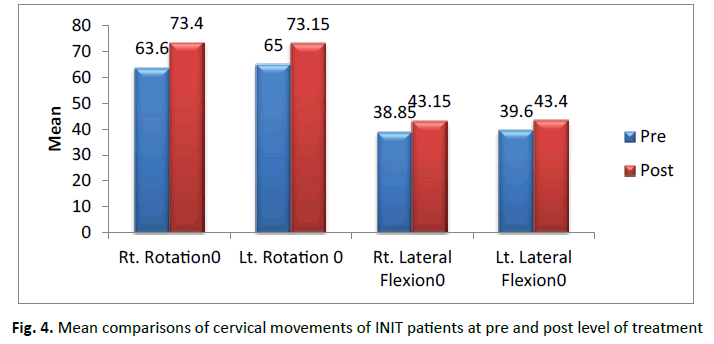
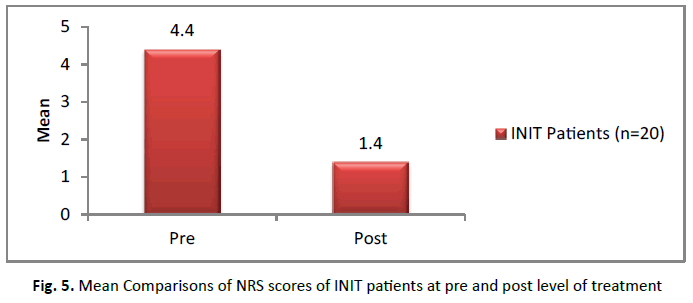


 Journal of Orthopaedics Trauma Surgery and Related Research a publication of Polish Society, is a peer-reviewed online journal with quaterly print on demand compilation of issues published.
Journal of Orthopaedics Trauma Surgery and Related Research a publication of Polish Society, is a peer-reviewed online journal with quaterly print on demand compilation of issues published.